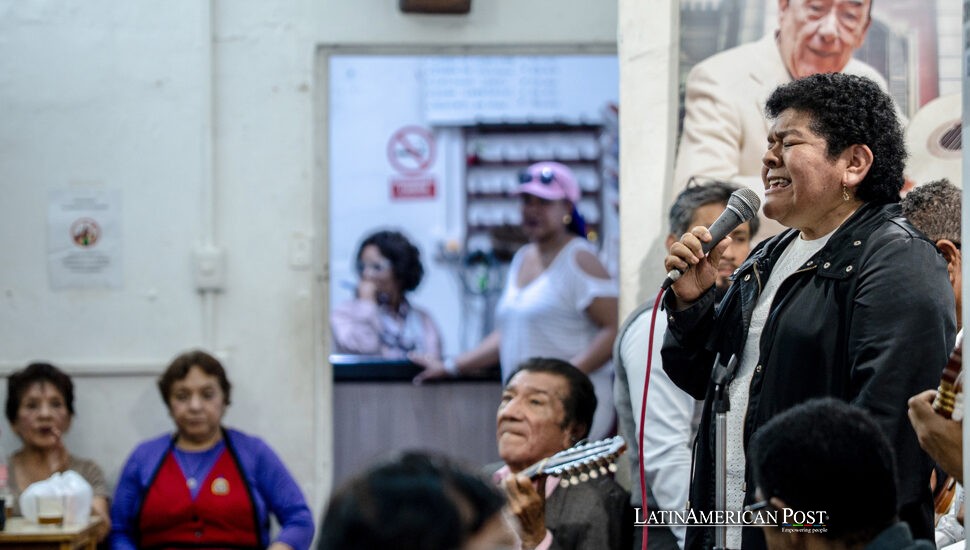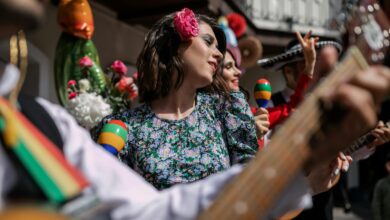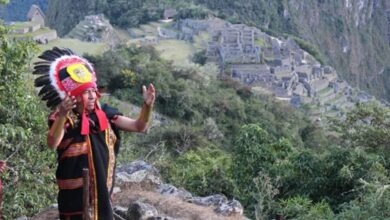Peru’s Criollo Comeback: How La Victoria’s Music Scene Is Beating Halloween at Its Own Game

In the crowded heart of La Victoria, the October air vibrates with something older than costumes or candy. Behind a modest doorway on a narrow street, guitars tune and cajones tap, a heartbeat cutting through the city’s static. On one side of the calendar sits Halloween’s imported glitter; on the other, the Día de la Canción Criolla, Peru’s own holiday of rhythm and memory. Inside this small hall, the verdict is already in—criollismo still rules the night.
Inside La Victoria’s Temple of Criollismo
Step through the doors of the Asociación Cultural Musical Domingo Giuffra, and the city outside fades. The room is cramped, the air thick with the scent of fried food and wood polish, but when the music starts, space expands. For fifty years, this neighborhood stronghold has been a sanctuary for Peru’s coastal sound—polcas, marineras limeñas, landós, festejos, waltzes—the living DNA of the nation’s urban soul.
“We are a bulwark of criollismo here in La Victoria; we want to cultivate what’s traditional,” said Mercedes Mendoza, the association’s president, in an interview with EFE. Her voice carries the conviction of someone who knows she’s holding a line others abandoned.
On stage—a small patch of floor between plastic tables—the last laúd player of his generation, maestro Valdivia, plucks out a melody fragile as a whisper and strong as a promise. The crowd claps in the coastal syncopation that feels like defiance: the rhythm of a city remembering itself.
This isn’t nostalgia. It’s resistance disguised as joy. Since October 31, 1944, has been the Día de la Canción Criolla, declared by President Manuel Prado Ugarteche as a national nod to local art. But in recent decades, Halloween’s neon tide has crept across Lima’s streets, luring young crowds with masks and lights. Yet here, the neighborhood holds fast—beer bottles sweating on the tables, guitars sweating in the hands—reminding everyone that heritage isn’t a hashtag, it’s a habit.
The Case for Celebrating, Not Embalming
Tradition can die from love as easily as neglect. Overpraise can freeze it in amber. At the Giuffra association, survival depends on performance. “We have a good group that loves our own and cultivates it. And we teach it to the young, especially on the day of the canción criolla. It’s like a birthday—it’s a national party for us,” Mendoza told EFE.
On this stage, legacy isn’t memorized—it’s danced. Guitars trade phrases with cajones, voices flirt in waltz time, and the steps of the marinera—part courtship, part duel—rehearse the complicated grace of being Peruvian. “Criollismo summarizes our essence, our identity, what we are, what we like, and what we want to keep being,” Mendoza added.
The stakes extend beyond art. Lima’s criollo culture demands space in schools, plazas, and municipal budgets. It reminds policymakers that culture doesn’t survive on paperwork—it survives on sound. A city that sponsors more jaranas than costume parades doesn’t reject modernity; it reclaims authorship of it.
Every year, as global pop anthems and Halloween playlists dominate radio, criollismo’s defenders make their counterargument not in speeches but in songs that outlive trends.

A Producer’s Mission: Modernizing Without Losing the Groove
If heritage is to endure, it needs new architects. After the pandemic, Carlos “Coco” Llaque stepped forward with a simple proposition: record the future before it forgets the past. Along with musicians Christian Loveday and Efraín Vassallo, he launched the Asociación Jarana de los Bachiches, a collective that builds bridges between generations.
They have since released two albums—Dejar el alma en cada canción and Desbordes de emoción—gathering the biggest names in criollo music: Bartola, Lucy Avilés, Carlos Castillo, Carmen Flórez, Rosita Guzmán, Coco Linares, and others. “I discovered the richness of música criolla, how challenging its different genres and rhythms are to execute correctly, respecting the traditional codes,” Llaque told EFE. “I decided to investigate each sound and flavor so that it kept that criollo sound.”
His words cut to the heart of the paradox of revival. Criollismo was born from a mixture of Spanish guitar, African rhythm, and Andean phrasing—and its strength is that it never pretended to be pure. Llaque calls it a mistura, the original blend of Peru’s coast. What he protects are not the melodies themselves but the codes—the rhythmic phrasing, the vocal warmth, the swing that tells you instantly, “This is ours.”
He even found inspiration in world headlines. This year, he wrote a tondero titled De Chiclayo al Vaticano, a coastal groove celebrating the fictional election of a Peruvian-American pope, recorded with Sonia Valderrama. “Perhaps it’s my song with the most diffusion,” he told EFE. “It was included as part of a Vatican News documentary about the pope’s visit to Peru.” The humor, pride, and reach of that song prove his point: criollismo doesn’t fear the world. It converses with it.
From YouTube to Barrio Floors: A Revival Finds Its Rhythm
In the streaming age, even the most traditional genres can find new ears. “I’ve noticed a resurgence, a bit more interest,” Llaque said to EFE, crediting YouTube and social media for making old recordings available to new generations. Teenagers stumble upon decades-old footage of Oscar Avilés or Chabuca Granda, fall in love with a riff, and then seek out a teacher or a jam session.
Conservatories now train musicians fluent in both jazz and festejo, as well as in both Mozart and marinera. “Now you see young musicians who are trained, who have musical projects that involve our expressions,” Llaque said. And when those projects return to the barrios—to peñas, patios, and neighborhood clubs—they close the loop between academia and street.
You can see it any given night: a teenage cajonero quoting an old Willy Terry rhythm while a conservatory-trained guitarist tosses in Ernesto Hermoza flourishes. The crowd knows when it works. They cheer not because it’s new, but because it’s true.
At the Giuffra association, the tables fill again as October turns. Outside, Halloween parades fade into the dark. Inside, the music is patient, insistent, and impossible to ignore. Tradition here is not a museum; it’s a conversation still being sung.
No tradition guarantees immortality, but criollismo isn’t chasing it. It’s chasing continuity—passing the rhythm hand to hand, bar to bar. When Mercedes Mendoza urges, “Celebrate the criollo inheritance because it summarizes our essence,” she isn’t defending the past; she’s defending Peru’s capacity to remember itself in melody.
In the end, Lima doesn’t need to choose between masks and marineras. It just needs to keep time with both hands—one clapping to the cajón, the other tipping a hat to its ghosts. For every guitar strum that cuts through October’s noise, the message is clear: the city’s heart still beats in 6/8 time, and it has no intention of going silent.
Also Read: Lima Turns Purple: The Procession of the Lord of Miracles Returns to the Heart of Peru




